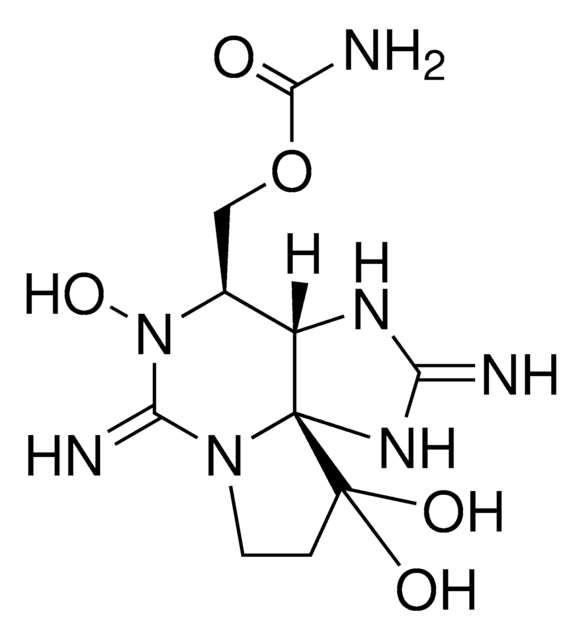MABN616
Anti-Potassium Channel Kv1.1 Antibody, clone K36/15
clone K36/15, from mouse
Synonym(e):
Potassium voltage-gated channel subfamily A member 1, RBKI, RCK1, Voltage-gated potassium channel subunit Kv1.1
About This Item
Empfohlene Produkte
Biologische Quelle
mouse
Qualitätsniveau
Antikörperform
purified antibody
Antikörper-Produkttyp
primary antibodies
Klon
K36/15, monoclonal
Speziesreaktivität
mouse, rat
Methode(n)
immunofluorescence: suitable
immunohistochemistry: suitable
western blot: suitable
Isotyp
IgG2bκ
NCBI-Hinterlegungsnummer
UniProt-Hinterlegungsnummer
Versandbedingung
wet ice
Posttranslationale Modifikation Target
unmodified
Angaben zum Gen
rat ... Kcna1(24520)
Allgemeine Beschreibung
Spezifität
Immunogen
Anwendung
Neurowissenschaft
Ionenkanäle & -transporter
Immunofluoresense Analysis: A representative lot from an independent laboratory detected Potassium Channel Kv1.1 in Kv1.1 transfected COS-1 cells (Tiffany, A. M., et al. (2000). J Cell Biol. 148(1):147-158.).
Immunhistochemistry Analysis: A representative lot from an independent laboratory detected Potassium Channel Kv1.1 in Kv1.1 transfected COS-1 cells (Wenzel. H. J., et al (2007). Epilepsia. 48(11):2023-2046.).
Immunohistochemistry Analysis: A representative lot from an independent laboratory detect Potassium Channel Kv1.1 in wild type mouse hippocampus tissue, and demonstrated a loss of signal in Potassium Channel Kv1.2 knock out mouse hippocampus tissue (Prof. J. Trimmer, University of California, Davis.).
Qualität
Western Blotting Analysis: 2 µg/mL of this antibody detected Potassium Channel Kv1.1 in 10 µg of mouse brain tissue lysate.
Zielbeschreibung
Physikalische Form
Lagerung und Haltbarkeit
Hinweis zur Analyse
Mouse brain tissue lysate
Sonstige Hinweise
Haftungsausschluss
Sie haben nicht das passende Produkt gefunden?
Probieren Sie unser Produkt-Auswahlhilfe. aus.
Lagerklassenschlüssel
12 - Non Combustible Liquids
WGK
WGK 1
Flammpunkt (°F)
Not applicable
Flammpunkt (°C)
Not applicable
Analysenzertifikate (COA)
Suchen Sie nach Analysenzertifikate (COA), indem Sie die Lot-/Chargennummer des Produkts eingeben. Lot- und Chargennummern sind auf dem Produktetikett hinter den Wörtern ‘Lot’ oder ‘Batch’ (Lot oder Charge) zu finden.
Besitzen Sie dieses Produkt bereits?
In der Dokumentenbibliothek finden Sie die Dokumentation zu den Produkten, die Sie kürzlich erworben haben.
Unser Team von Wissenschaftlern verfügt über Erfahrung in allen Forschungsbereichen einschließlich Life Science, Materialwissenschaften, chemischer Synthese, Chromatographie, Analytik und vielen mehr..
Setzen Sie sich mit dem technischen Dienst in Verbindung.








